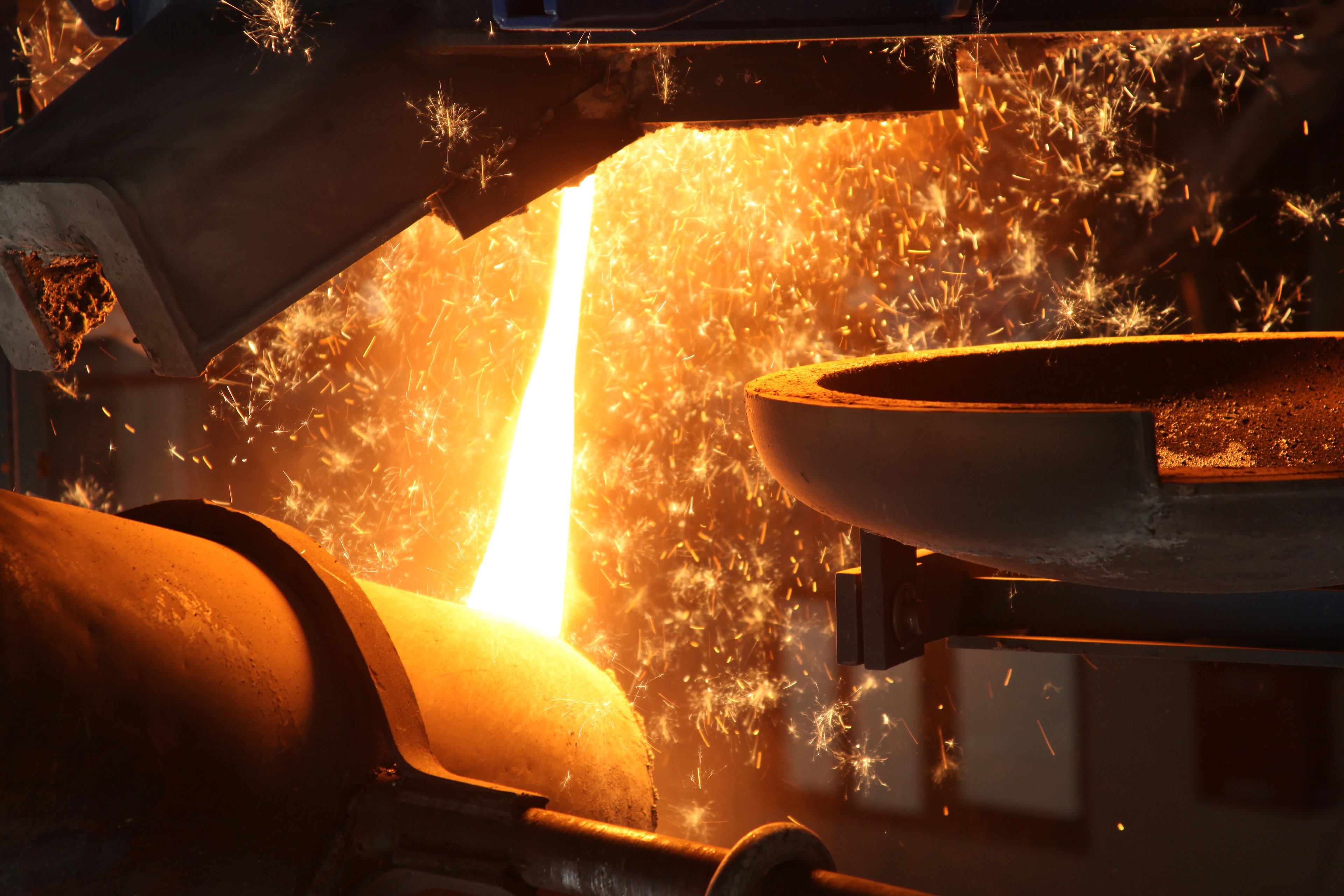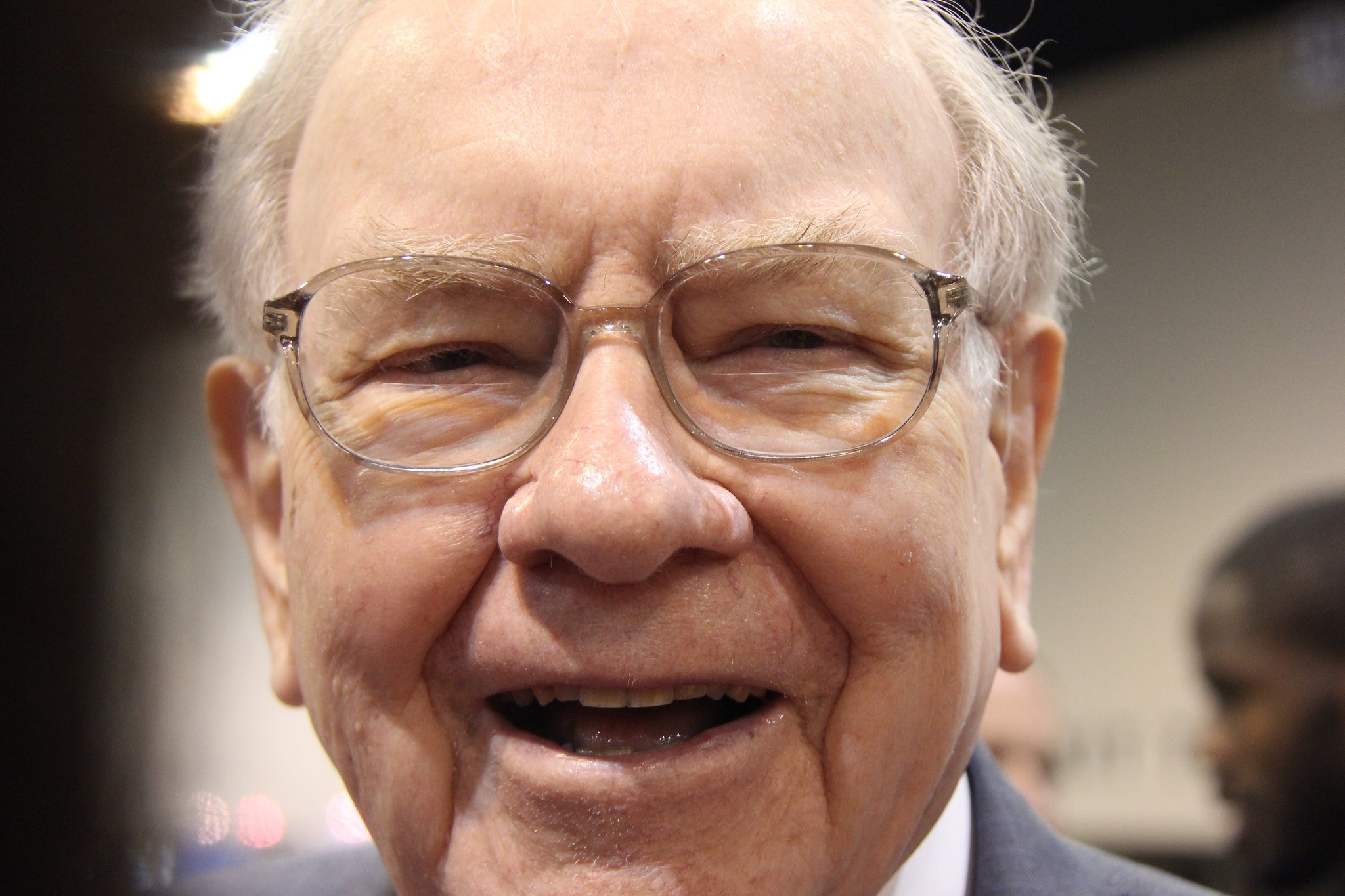Steelmaking dynamo Nucor (NUE +1.34%) reported first-quarter results on April 23. The company forged a surprisingly strong Q1, with EPS of $1.63 coming in way ahead of the $1.45-to-$1.50 guidance range management had issued only two weeks before the end of the quarter. It was also substantially better than the $1.10 per share Nucor earned in the first quarter of 2018.
Considering that 2018 would end up being the company's most-profitable year ever, it's certainly optimistic to see Nucor get 2019 off to a strong start.
But even with the surprisingly strong bottom line, steel prices continue to fall. And Nucor's capacity utilization -- a crucial operating measure -- slipped to 87% in the quarter, down year over year and sequentially.

Nucor says it will grow steel shipments this year, even with weak demand in segments like the auto industry. Image source: Getty Images.
Let's look at Nucor's first quarter, and what management says to expect going forward.
Nucor results: The raw numbers
Here's how Nucor delivered on some key operating and financial metrics:
| Metric | Q1 2019 | Q1 2018 | Year-Over-Year Growth (Decline) |
| Revenue | $6.097 billion | $5.568 billion | 9.5% |
| Net income | $501.8 million | $354.2 million | 41.7% |
| Earnings per share | $1.63 | $1.10 | 48.2% |
| Sales (in tons) to outside customers | 6.77 million | 6.97 million | (2.9%) |
| Operating rate | 87% | 88% | (1.1%) |
| Gross margin | 14.7% | 13% | 12.6% |
Source: Nucor Corporation.
In short, Nucor's profits surged in the quarter because higher steel prices compared with the year-ago period resulted in a big margin boost, sending a lot of that incremental revenue to the company's bottom line as its steel mills continue to operate at relatively high capacity.
Deterioration in a few key metrics bears watching
It's worth noting that Nucor's steel mill operating rate did deteriorate slightly versus the year-ago quarter, and the volume of steel Nucor sold to outside customers fell nearly 3%. Total shipments from Nucor's steel mills, which includes steel sold to external customers and used internally by other segments, fell 4% year over year.
Moreover, the company saw these metrics deteriorate even more sharply from the sequential period, the fourth quarter of 2018:
| Metric | Q1 2019 | Q4 2018 | Year-Over-Year Growth (Decline) |
| Revenue | $6.097 billion | $6.296 billion | (3.2%) |
| Net income | $501.8 million | $646.8 million | (22.4%) |
| Earnings per share | $1.63 | $2.07 | (21.3%) |
| Sales (in tons) to outside customers | 6.77 million | 6.69 million | 1.2% |
| Operating rate | 87% | 88% | (1.1%) |
| Gross margin | 14.7% | 17.7% | (17%) |
Source: Nucor Corporation.
As the table shows, Nucor's financial and operating results weakened across the board from the fourth quarter to the first quarter, even as it sold slightly more steel. A combination of things caused this: Steel prices decreased 4% from the fourth quarter, and input costs (primarily scrap and scrap substitutes) decreased only 2% sequentially -- a lower rate than the price decline in finished steel -- furthering the compression of margins.
From an operations perspective, Nucor's operating rate of 87% in the first quarter is a meaningful decline from the full-year 2018 average of 91%.
Management is unfazed, focusing on strong demand and internal growth projects
The slight deterioration in Nucor's operating metrics, as well as the recent decline in steel prices, stood out in the earnings results. But management -- at least publicly -- remains optimistic on both steel demand and the company's ability to make good on its expansion plans.
On the earnings call, CFO Jim Frias said, "We continue to be encouraged by the overall strength of our domestic end-use markets. In fact, we see stable or improving demand in 21 of the 24 end-use markets we monitor."
Moreover, Nucor looks primed to take market share, with Frias saying that even though automotive demand is expected to decline (automakers and suppliers are two end-markets expected to decline in 2019), " ... Nucor will actually grow its shipments to these customers in 2019."
If Nucor is able to grow by taking market share, it will largely be due to investments to expand the types of products it can make. For instance, Nucor's Kentucky sheet mill will be able to produce 72-inch-wide galvanized sheet steel, the widest in North America, and its proximity to much of North America's auto manufacturing will be a competitive advantage.
Moreover, management pointed out that its investments aren't just about added capacity and steel product. Recent upgrades at a steel mill in Arkansas will, CEO John Ferriola said, significantly improve its cost structure "and position the mill as the leader in the regional rebar markets that it serves."
Management continues to prioritize capital projects that improve its market position, help it grow shipments, and -- most important -- generate a meaningful return on capital.
The trade fights continue
Steel prices have come down, but the impact of last year's tariffs continue to help Nucor and its domestic peers sell more steel at higher prices. Moreover, the industry got even more potentially positive news on trade recently, with the U.S. International Trade Commission (ITC) issuing a determination that there is "reasonable indication of material injury" from fabricated structural steel imported from China, Canada, and Mexico that domestic steelmakers allege is being illegally subsidized by its country of origin.
This initial determination alone doesn't have any material impact, but it does mean the ITC will further review the case and consider enforcement -- i.e. further tariffs and duties on those specific products from the countries -- to counter illegal subsidies. If that happens, it would both increase selling prices for those goods, and likely reduce imports.
Looking ahead: Optimism abounds for 2019, with big projects set to drive the future
While it's looking like Nucor may not reach 2018's heights in profits, the industry looks primed to have another very good year. It's also worth noting that Nucor's operating rate could actually fall even more at times, due to the timing of bringing expansions of its mills on line. It can take time for these new mills to ramp up capacity, and that could artificially deflate this metric as internal expansion projects enter operation.
Nucor doesn't issue specific guidance in its quarterly earnings releases, but it does offer some commentary. To paraphrase this version, the second quarter would be similar to the first, with weakening margins in sheet and plate being offset by better margins in structural and bar products from its mill segment; meanwhile, its steel products segment would see "significantly improved" profitability in the second quarter due to typical seasonality of the business as well as improved weather conditions driving demand in nonresidential construction.
It's risky trying to predict when the steel cycle will turn from this phase of robust growth in North America, but Nucor continues to deliver in the current growth environment while management allocates capital to projects that will drive its next phase of growth. It remains to be seen whether those projects pay off in the current cycle, or we see a downturn in the next couple of years and they don't pay off until the cycle turns back to growth.
Either way, Nucor continues to demonstrate why it's the best steelmaker in North America by a long shot.






